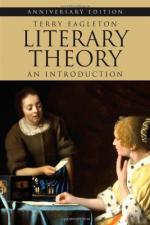
|
| Name: _________________________ | Period: ___________________ |
This quiz consists of 5 multiple choice and 5 short answer questions through Chapter 1, Rise of the English.
Multiple Choice Questions
1. According to Eagleton, formalism is the application of what to the study of literature?
(a) Psychology.
(b) Linguistics.
(c) Sociology.
(d) Economics.
2. During the 1960s, what kind of students began to enter higher education that broke down assumptions about literary studies?
(a) Students from supposedly "third-world" countries.
(b) Students from supposedly "first-world" countries.
(c) Students from supposedly "cultivated" backgrounds.
(d) Students from supposedly "uncultivated" backgrounds.
3. What is "imaginative" literature or literature that is not necessarily true?
(a) Biography.
(b) Nonfiction.
(c) Fiction.
(d) Memoir.
4. According to Eagleton, "theory was a way of _______ literary works from the ________of civilised sensibility'"
(a) Studying; truth.
(b) Emancipating; stranglehold.
(c) Excluding; oppression.
(d) Dismissing; idea.
5. In the eighteenth-century, what was the whole body of writing in society considered, including philosophy, letters, history, poems, and essays?
(a) Canon.
(b) Religion.
(c) Literature.
(d) Theory.
Short Answer Questions
1. According to Eagleton, William Empson "insists on treating poetry as a species of ______language."
2. How do linguists describe the effect of language where "the texture, rhythm and resonance of words are in excess of their abstractable meaning."
3. Who was glad to abandon the "feminine vagaries of literature" in favor of penning war propaganda?
4. Eagleton provides the analogy of finding a "scrap of writing from a long-vanished civilization" to make what point about deciphering its meaning?
5. Why is the example Eagleton gives of the sign in the London Underground system that "dogs must be carried on the escalator" a case of estrangement?
|
This section contains 373 words (approx. 2 pages at 300 words per page) |

|




